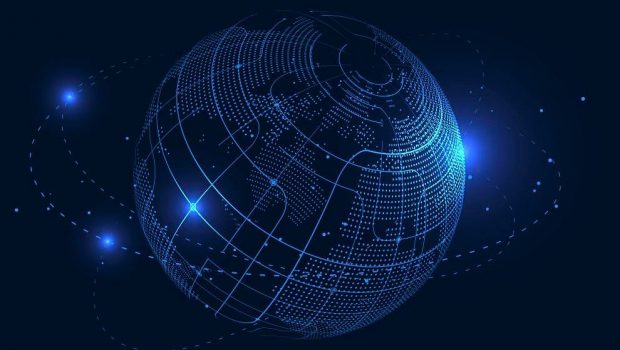Our Climate Crisis – Time Isn’t On Our Side, But Technology Is
https://www.ispeech.org/text.to.speech
While a new UN report from the Intergovernmental Panel on Climate Change notes our window for success against global warming is rapidly shrinking, we can still get to where we need to be.
We have the tools. We have the science. We can do so much more.
Indeed, our efforts are working.
Renewable energy technologies like solar and wind are at their most affordable and expanding. Cities are strategically embracing open spaces and green infrastructure that not only improve quality of life but reduce flood risks and heat islands. Electric transportation is gaining ground as the charging infrastructure catches up. We have a blueprint of the planet that can help us pinpoint where species and crops may be able to flourish despite a changing climate. We are seeing some of our biggest government agencies collaborate on solutions. And, our largest businesses are seeing sustainability as a core practice, and actually a necessity for survival.
The economic benefits of climate mitigation are even expected to surpass the costs. It’s clear that a sustainable world can be a prosperous one.
Time Enough for an All-in Intervention
It’s evident as well that our most difficult challenges—including the climate crisis but also social and economic inequality—are inherently tied to issues of geography. Key to understanding such issues and acting on them is knowing what is happening where, why they happen where they do, and what might happen next in any specific location. Consider the coronavirus pandemic. We know as much as we do about its spread because enterprising academics used their skills and technology to create a continuously updated map of cases and trends. The COVID map from Johns Hopkins University opened the world’s eyes. It helped people understand the context of what we were up against.
To deal effectively with the climate crisis, we need major segments of our society, organizations, governments, and businesses around the world embracing a similar geographic approach. We need to be problem solving, embracing what technology can offer, and using our skills to design a more sustainable future.
The foundational technology for such an approach, a modern geographic information system (GIS), absorbs massive volumes of data about what’s occurring on our planet and helps make sense of its meaning. The information can be measured, organized, analyzed, visualized, and better understood.
We’re already gathering important data from tens of thousands of individual and trusted scientific, government, and NGO groups that wish to share and make their knowledge openly available. Organizing and analyzing that information in a shared space helps create a platform for better managing our world.
It’s the data that populates Esri’s Living Atlas of the World, an open collection of authoritative information and maps. The atlas describes critical issues about people, places, economies, natural systems including hydrology, biology, vegetation, and of course the rich biodiversity that sustains us. This atlas also includes satellite and aerial imagery depicting the changing human footprint. There’s near real-time information about pollution and weather and land cover.
The effects of our impact on the planet have long been witnessed by researchers looking at aerial land cover maps. Now, after developing a new, high-resolution global map of land cover with help from artificial intelligence and machine learning, we can see changes on the earth’s surface on a weekly basis. We can see where demands for natural resources and large developments are consuming and threatening biodiversity. We can even use this up-to-date information to predict, with modeling, what the surface of the earth may look like in 2030, 2040, 2050, and beyond. That could include where sea-level rise may overtake coasts or where deforestation is spreading or slowing and what’s likely to happen when formal government policies and enforcement are put in place to conserve land.
We now know more about our planet than we ever have, but there’s still so much more to learn.
Scientist and statistician Mario Palma said it well in a book chronicling the development of Mexico’s National Institute of Statistics and Geography: “The lack of understanding of our own reality–be it social or economic, natural or environmental–is one of the great risks that every society faces.” Yet, as Palma notes, it’s “a risk we can overcome with the very intervention of institutions specialized in the production of statistical and geographical information.”
Scale, Share, and Spread Solutions
Ultimately, we need a science-based geographic approach to the way we make decisions, both as individuals and as local, regional, national, and global institutions. When you represent your data geographically, not as a list but as a picture that tells a story, and model it, you can see what’s happening where and predict what might happen next.
This approach is going to grow and expand. It's going to empower our collective response to understanding and taking action, not only for climate, but all the interrelated challenges we face as a global society.
We at Esri have the privilege of working with 10 million people across the world, including about 350,000 organizations, using geospatial technology to make a difference. They manage forests, water, and agriculture. They’re conserving land, modelling environmental conflicts, and designing more sustainable cities. They’re choosing the best sites for solar and wind energy farms, building risk mitigation plans, and protecting species. They’re making services more equitable.
What we urgently need to do is scale those efforts and work together, sharing what works and what doesn’t, spreading solutions far and wide and accelerating our collective understanding.
This Anthropocene era we’re living in–one dominated by human activity–can end up being one of the greatest comeback stories ever told. As long as the window of opportunity remains open–it’s true that it’s late in the day but it is not dark yet–there’s every reason to believe we can turn our situation around.
So much good work is already being done by organizations around the world; there just needs to be much more of it.








Gloss